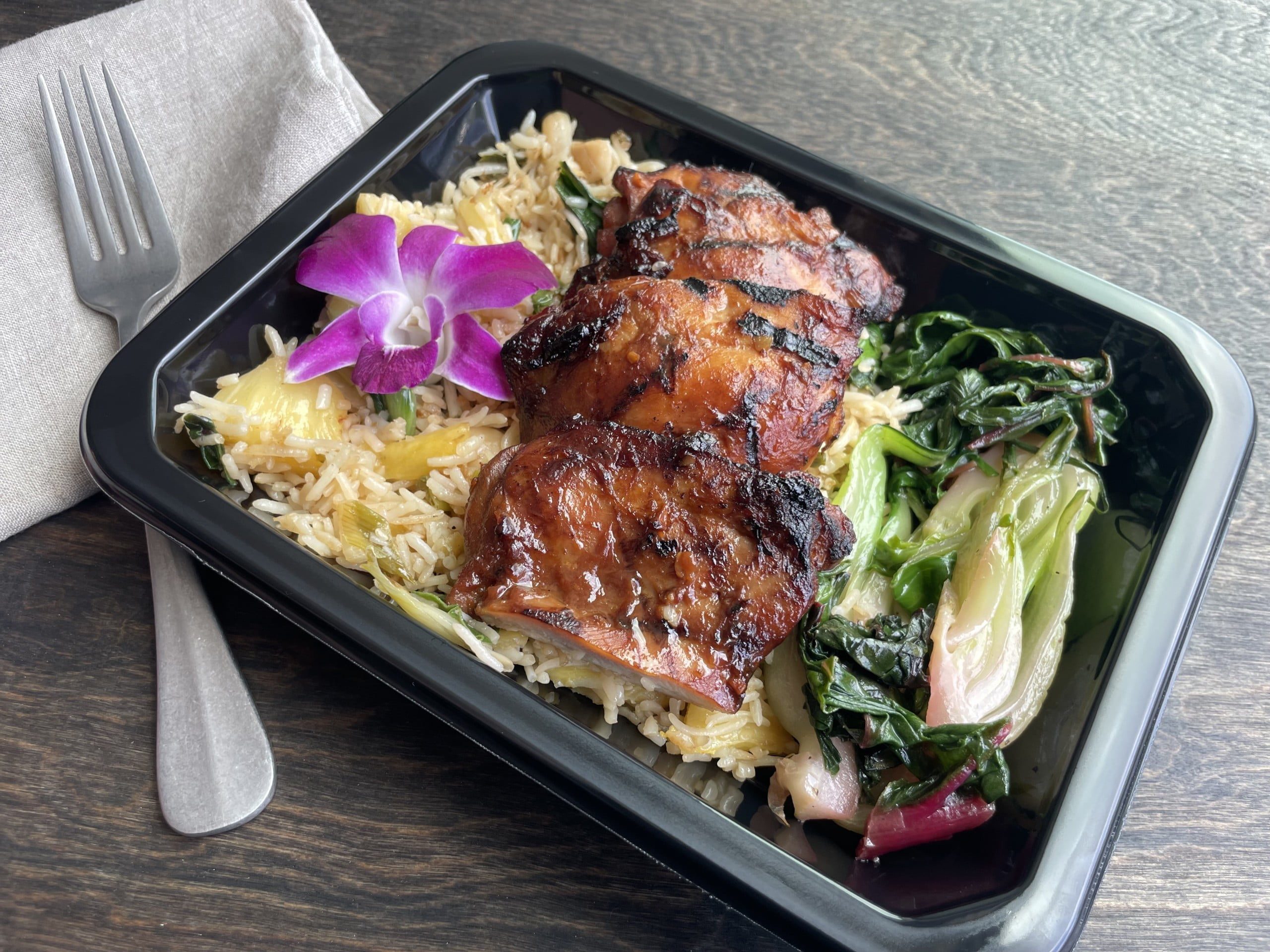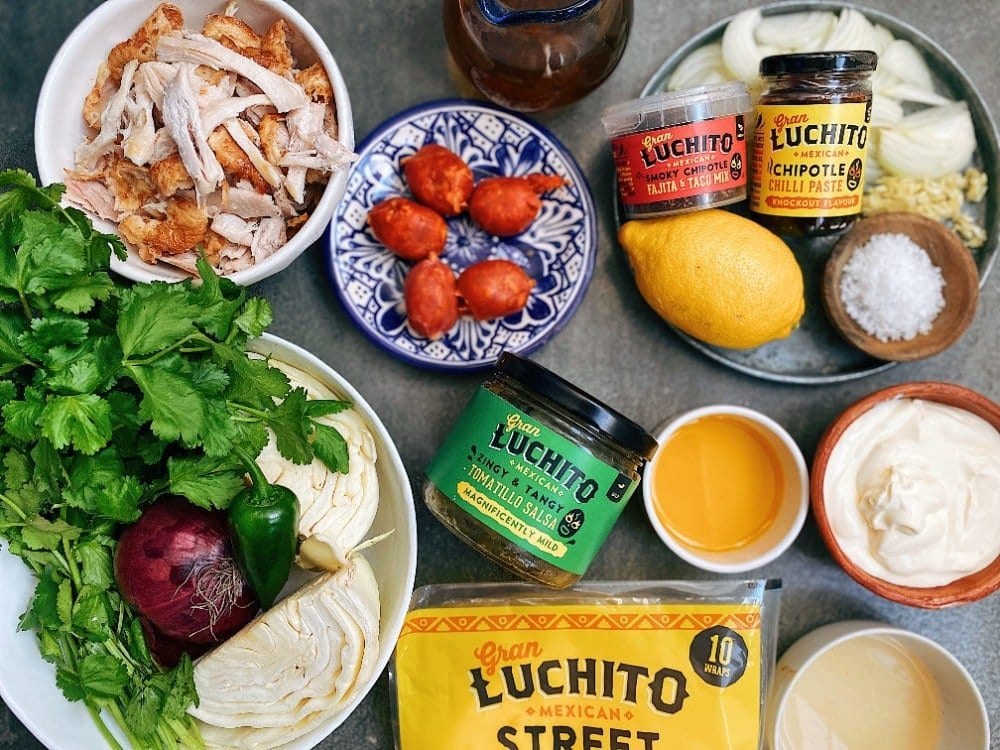
Take your tastebuds on a Hawaiian Vacation
Summer just got here, and this heat already has us dreaming of a sweet island getaway. That’s why this month we turned to the beautiful
Cart
No products in the cart.
Our Website is under maintenance if you run into any issues, please call us (832)-942-4012
When we organize our thoughts about Memorial Day, the All-American Burger should not take center stage. Memorial Day is above all a time to honor and respect the men and women in uniform who have sacrificed their lives for this country. Healthy Gourmet is deeply grateful to those who are responsible for the freedom and liberties that we enjoy today.
But what better way to celebrate our fallen heroes than with food that epitomizes the heart and soul of backyard grilling in America? A meal that is embraced by almost everyone because of its versatility. We are speaking of course of the great All-American Burger. Whether you’re a lover of beef or turkey, a vegetarian or a vegan it’s a crowd-pleaser among young and old with a loyal following.

Several US states make claim to ‘inventing’ the first burger but, as Nate Barksdale of The History Channel says, “you can’t tell the story of its origin without outlining a far greater lineage, linking American businessmen, World War II soldiers, German political refugees, medieval traders and Neolithic farmers”. However, perhaps the German immigrants had the most lingering impact as America named the chopped meat after ‘Hamburg”, an exporter of high-quality beef at the time.
Texas has its own fabled legend that the burger was first created by “Uncle Fletcher Davis” of Athens (Texas). According to oral histories, in the 1880s he opened a lunch café on the Henderson County courthouse square in Athens. There he served a ‘hamburger’ of fried ground beef patties with mustard and Bermuda onion between two slices of bread, with a pickle on the side. Years later it was allegedly served to a wider audience and made famous at the 1904 World’s Fair in St Louis. Thereafter it would soon become the famous All-American Burger.
In David Michael’s book “The World is Your Burger: A Cultural History” he describes the evolution of today’s hamburger beginning at the 1904 World Fair in St Louis. He describes how the hamburger makes its journey through Wichita in the early 1900’s with the birth of White Castle and diversifies into a cheeseburger in Pasadena, CA, in Lionel Sternberger’s family owned diner ‘The Rite Spot’.
In 1931 the New York based animation house Fleischer Studios created the famous hamburger-eating comic character J. Wellington Wimpy for the Popeye series. He was the inspiration behind the name of the burger chain started by Edward V. Gold in Bloomington, Indiana, in 1934, expanding to Chicago in 1936. Subsequently, Wimpy’s biggest expansion came after Gold sold the rights to the name and trademark and the chain went multinational in 1954.
In 1948 in San Bernadino California the McDonald brothers switched from a barbecue shack to hamburgers and started what became the largest fast food chain in the world. But it wasn’t until the following decade that McDonalds became a global phenomenon’s when it was bought by milkshake machine salesman Kay Kroc and transformed into a global franchise. His first restaurant opened in Des Plaines, Illinois, in 1955.
While McDonalds and Wimpy were busy growing their empire, David Edgerton and James McLamore of Miami Florida purchased a floundering restaurant and renamed it Burger King, becoming one of McDonald’s biggest competitors. And then in 1969 in Columbus Ohio, Wendy’s was created by former KFC head Chef Dave Thomas. While Wimpy’s US stores are long gone in the US (although interestingly thriving in South Africa), Burger King and Wendy’s remain by far the second and third largest burger chains in the US.
Burger King and Wendy’s each rake in $9-10 billion in sales every year. However, this is still astoundingly lower than the ubiquitous McDonalds, who stands tall and proud at around $37 billion in sales a year. McDonalds truly is kingpin when it comes to the fast food version of the All-American burger. Other top-ten big players in ascending order of sales revenue include Sonic ($4.4 billion), Dairy Queen, Jack in The Box, Whataburger, Hardees, Carl’s Junior and Five Guys ($1.4 billion)
A little-known fact is that ground beef and hamburger meat are not exactly the same thing even though the names are often used interchangeably. Most people assume that the term ‘hamburger’ is used as an alternative word for ground or minced beef because it references the fact that the meat is often shaped into burger patties. This may be true but there is actually a culinary distinction between ‘hamburger’ meat and ‘ground’ or ‘minced’ meat.
The distinction is that according to government regulations, ground beef cannot have extra cubes of fat added to the mix, but hamburger can. What they do have in common is that neither product can contain more than 30% fat. Moreover, both are meats and trimmings that have been finely chopped with a knife or a meat grinder or mincing machine. They can and are both used in many recipes including hamburgers, tacos, chili con carne and Bolognese sauce.

When we shop for ground beef (or hamburger) we sometimes only look at the fat percentage as our point of comparison but it’s interesting to know more about the cut of meat that lies beneath the fat content and what it brings to your meal in terms of flavor.
Jessica Gavin, Culinary Scientist explains that “the ratio of fat to meat as well as where the meat came from on the cow is what differentiates the varieties of ground beef. It starts with regular ground beef and then gets increasingly leaner from there.”
This is usually made from brisket or shank. The cuts are taken from the breast area above the cow’s forelegs. Since this is a muscular part of the animal these cuts are not known for their natural tenderness and work best when cooked with moist heat, such as braising, stewing, or pot roasting. The highest fat content of all the types of ground beef, this kind is the most flavorful and the most affordable. The downside? The high fat content melts and makes it diminish in size when cooked. Additionally, it can be mushy and not good for a low-fat diet.
Commonly referred to as lean ground beef since it’s a little less fatty than regular ground beef. It comes from the shoulder of the cow. While lower in fat, it still delivers plenty of flavor. Words like rich and tender describe this ground beef, which makes it a great burger patty meat.
Considered extra lean ground beef this cut comes from the back half of the cow, often from around the tail. Unlike ground sirloin, which also has low fat, you won’t find as much of a beefy flavor (ground sirloin retains its rich and meaty flavor better).
This is also in the extra lean category and comes from the middle of the cow. It may be drier than regular ground beef or ground chuck after cooking because the fat content is lower. On the other hand, that’s what makes it the healthier option. In conclusion, it’s not ideal for burgers but works well in sauces.
Another factor to consider when choosing ground beef is its USDA quality grade. It can fall into three categories: prime grade, choice grade, and select grade.
Brady Klopfer shares some great hacks for making the perfect All-American Burger:
If you’re making turkey burgers apply all the same tricks but add additional moisture to the meat to avoid dryness. For example, add a quarter cup of mayonnaise, plain yogurt, ricotta cheese or spreadable herbed cheese per one and a quarter pounds of meat.
The internet is full of alternatives to ground beef patties in addition to turkey. For example, vegan lentil burgers and salmon apple burgers on Food Network’s Healthy Eats. For laughs, check out The Shortlist’s 25 weirdest burgers ever made, including Black Bun Fried Frog Burger, The Braille Burger and The Whole Damn Farm Burger!
What to do with your leftover hamburger patties? Here are some ideas that will transform your leftover All-American Burger into something delicious. Incorporate a few regional flavors suggested by Robin Shreeves:
Enjoy an All-American Burger this Memorial Day and if you’re not cooking from scratch why not try one of Healthy Gourmet’s delicious prepared meals made from all-natural ground beef? You can’t go wrong!
https://www.beefmagazine.com/blog/5-memorial-day-blogs-serve-tribute-fallen
https://www.jessicagavin.com/types-of-ground-beef/
https://www.mnn.com/food/healthy-eating/blogs/10-uses-for-leftover-cooked-hamburgers
https://www.asi.k-state.edu/doc/meat-science/the-difference-between-ground-beef-and-hamburger.pdf
https://www.workandmoney.com/s/biggest-burger-chains-02bacbf3e4194e98
https://news.wttw.com/2017/02/01/ask-geoffrey-what-happened-chicago-burger-chain-wimpy-s
https://www.saveur.com/gallery/A-Guide-to-Hamburger-Meat/
https://www.shortlist.com/news/the-25-weirdest-burgers-ever-made
https://food-hacks.wonderhowto.com/how-to/7-tips-for-making-best-burgers-ever-0162185/
https://www.foodrepublic.com/2011/04/01/beef-guide-day-6-the-brisket-shank/
https://www.history.com/news/hamburger-helpers-the-history-of-americas-favorite-sandwich
https://www.foodandwine.com/comfort-food/burgers/burger-timeline
https://whatscookingamerica.net/History/HamburgerHistory.htm
https://theculturetrip.com/north-america/usa/articles/a-brief-history-of-the-hamburger/
https://www.timeout.com/newyork/restaurants/the-history-of-the-hamburger-an-american-invention
https://www.texasmonthly.com/being-texan/the-texanist-who-invented-the-texas-style-burger/
https://en.wikipedia.org/wiki/History_of_the_hamburger_in_the_United_States
https://www.seriouseats.com/2016/01/food-history-1904-worlds-fair-st-louis.html

Summer just got here, and this heat already has us dreaming of a sweet island getaway. That’s why this month we turned to the beautiful

Check out how EatFlavorly utilizes Mexican meats and so many more in our scratch-made meals over at Our Menu! With Cinco de Mayo

National Earth day is approaching on Thursday April 22nd. Today, not only is Earth Day a day meant to increase awareness of environmental problems, but
The convenience of home meal delivery is undeniable. Getting food delivered to your door that does not require cooking or cleaning is a huge time-saver.